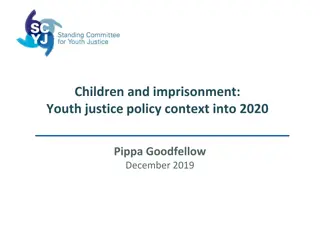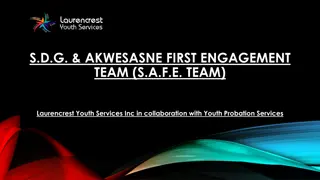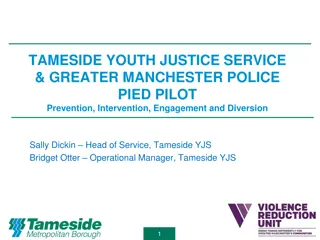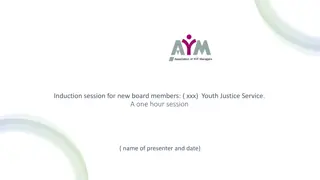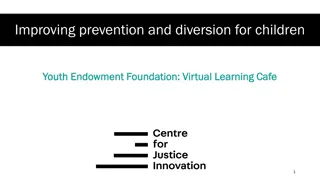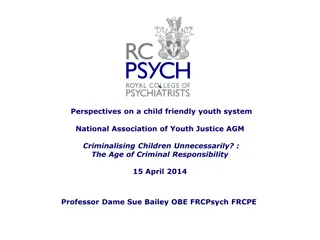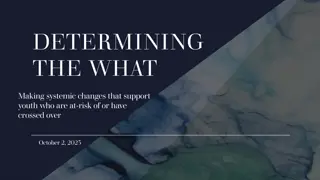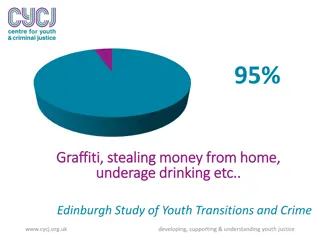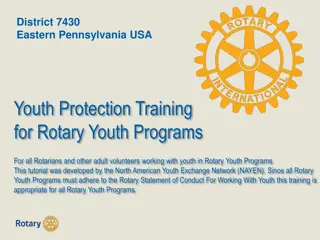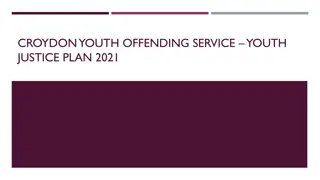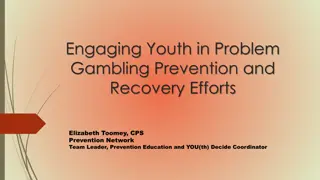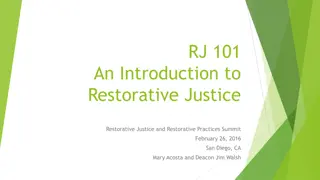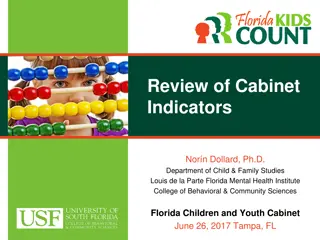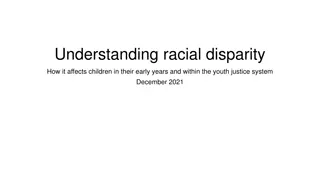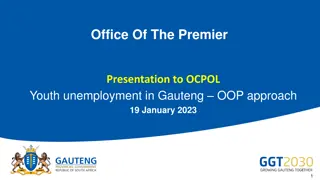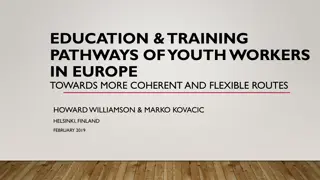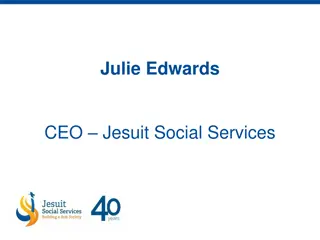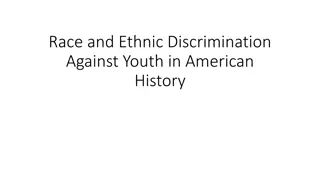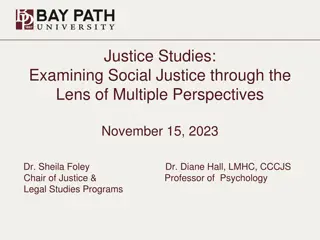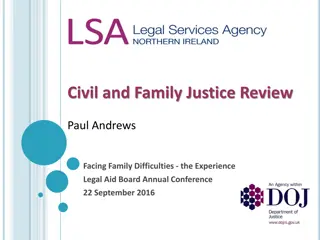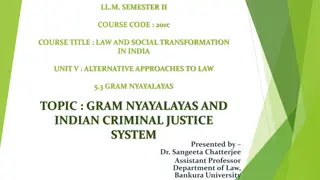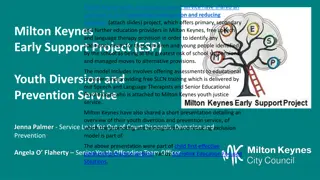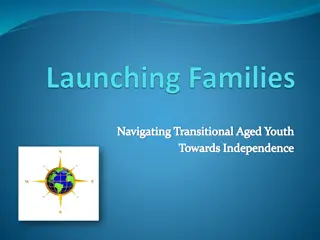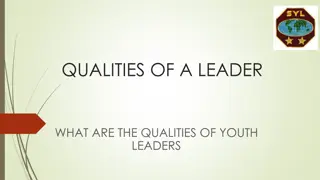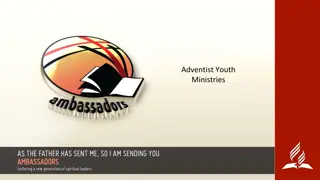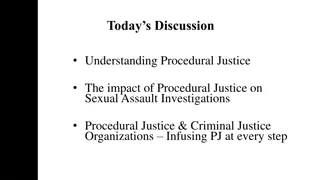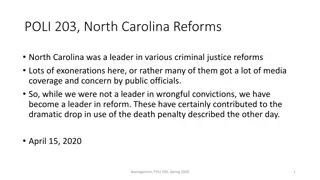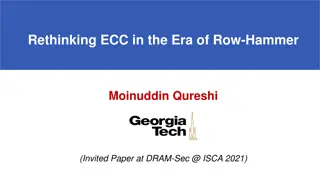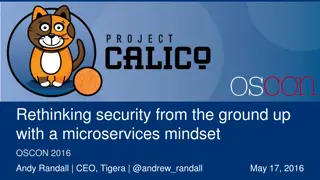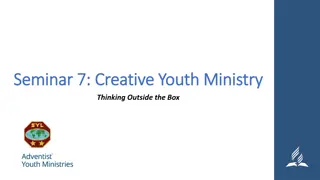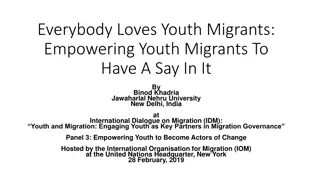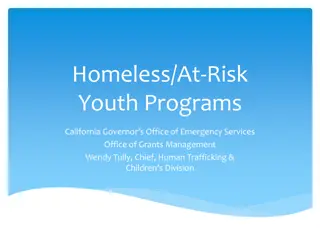Rethinking Youth Justice: A Positive Approach Towards Children
Explore the Positive Youth Justice (PYJ) approach that prioritizes children over offenders, challenges the risk-focused system, and promotes a progressive treatment of youth in the justice system. Delve into the principles of PYJ/CFOS, its implications for practice, and the need for a shift from risk assessment to a more holistic approach in youth justice.
Download Presentation

Please find below an Image/Link to download the presentation.
The content on the website is provided AS IS for your information and personal use only. It may not be sold, licensed, or shared on other websites without obtaining consent from the author. Download presentation by click this link. If you encounter any issues during the download, it is possible that the publisher has removed the file from their server.
E N D
Presentation Transcript
Positive Youth Justice Positive Youth Justice Children First, Offenders Second Children First, Offenders Second Professor Steve Case, Loughborough
Who am I? www.cycj.org.uk developing, supporting & understanding youth justice
What Ill cover What I ll cover PYJ as anti-risk & anti-negative youth justice The PYJ/CFOS principles PYJ/CFOS as practised in the Swansea Bureau The positive turn? Surrey Youth Support Service & PYJ Implications for youth justice practice
Positive Positive youth Children Children First, Offenders Second First, Offenders Second youth justice: justice: Children First, Offenders Second (CFOS) evolves contemporary youth justice beyond its contemporary risk focus Promotes a principled, progressive and practical approach to the treatment of children in the Youth Justice System.
CFOS as anti CFOS as anti- -risk risk The measurement, assessment and amelioration of risk drives contemporary youth justice Risk Factor Prevention Paradigm, Scaled Approach However, the utility & appropriateness of the risk paradigm has been over-stated PARTIAL foci, methods, understandings NEGATIVE-facing & retrospective No consensus about what approach should or can replace risk as the driver of policy and practice.
Medway Improvement Board report May 2016 They treat you like an animal and it s when you need real help. Young person at Medway STC over-controlling and degrading dehumanising control and containment the voice of the children is not being effectively heard
The Board noted that the use of the term risk assessment appears very frequently in all documentation...The Board is concerned that this practice appears more about control and containment than safeguarding vulnerable children Medway Improvement Board Report May 2016
Children grow to fill the space we create for them, and if it s big, they grow tall. I ve not yet met a child not capable of greatness if given the opportunity and encouragement .The best present we can give our children is the chance to do something great. It s a gift that will last a lifetime and transform their lives. Jonathan Sacks quoted in the Medway Improvement Board report
Positive Positive youth justice: youth justice: Children First, Offenders Second Children First, Offenders Second 4 principles promoting: 1. Child friendly - adults responsibilities 2. Promotion, inclusion & desistance 3. Diversion & systems management 4. Relationship-based partnerships inc. participation, engagement, legitimacy
The Bureau Model The Bureau Model Diversionary Child-first Partnership children/family, agencies, pracs Evidenced based & effective reductions in FTEs & reconviction higher % of NCDs inclusion, participation, engagement, legitimacy
The Positive Turn? The Positive Turn? Austerity we can t afford negative YJ Build on success of diversion, restoration Devolution / public service reform local areas can drive new agenda YJ Review children-first and education- centred agenda Children-first policing a positive driver for YJ
Surreys Positive Youth Justice Surrey s Positive Youth Justice the story so far the story so far Diversion (lowest FTE in the country) 4thlowest user of custody in E&W s Integrated non-siloed (no YOT) within one stop shop for a range of vulnerable YP s C&F assessment not Assetplus Restorative for young person and victim Relationship-based service, built on what works for adolescents Participative engaging, accessible, inclusive Future focused emphasis on education, skills and employability Referenced in Taylor Review (interim report) & Laming review of looked after children in the CJS
Surreys Positive Youth Justice Surrey s Positive Youth Justice what next? next? Positive policing Prioritising safeguarding and well-being Whole family approach Services designed around CYP meeting their needs not system s needs Evidence based, rights compliant, CYP first Stop doing the things we know cause harm and don t work Whole-system PYJ what
Implications for national practice? Implications for national practice? Stop doing offender assessments (Asset+) and siloed YJ interventions - Stop being a mini probation service Integration of YJ into children s services (with health) One child - one plan LAC/CP/CiN/YJ/CAMHS/EHCP Persistent offending as safeguarding: right help at the right time outside of the YJS Children-first policing No child prisons Inspection / regulation: by Ofsted / DfE incorporating HMIP / MoJ expertise and requirements Raise the age of criminal responsibility
Positive Positive youth justice: youth justice: Children First, Offenders Second Children First, Offenders Second CFOS is a blueprint for a distinctive, principled, progressive approach to working with children Can be adopted and adapted by local authority areas throughout the UK, Europe and beyond. The evolution, trajectory and practical realisation of a CFOS in Wales is discussed and animated with evidence from a twenty-year programme of associated reflective research in the book:
Contact Contact Email: s.case@lboro.ac.uk Website: www.profstevecase.com Facebook Positive Youth Justice group https://www.facebook.com/groups/853804234630683/ See also: Byrne, B. and Case, S.P. (2016) Towards a positive youth justice. Safer Communities, 15 (2): 69-81.
Haines and Case (2015) Positive Youth Haines and Case (2015) Positive Youth Justice: Justice: Children First, Offenders Second Children First, Offenders Second. Policy Press . Policy Press
Any questions? Any questions? www.profstevecase.com www.profstevecase.com www.cycj.org.uk developing, supporting & understanding youth justice




